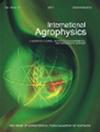高光谱成像结合多元分析和人工智能对玉米粒的分类
IF 1.7
4区 农林科学
Q2 AGRONOMY
引用次数: 16
摘要
。玉米(Zea mays)是世界主要作物之一,种植面积仅次于小麦和水稻,居世界第三位。本研究旨在利用400 ~ 1000 nm波长范围内的非破坏性高光谱成像技术对3个玉米品种的籽粒进行鉴别和分类。对3个玉米品种的籽粒进行了20次高光谱成像。预测变量包括光谱成像反射波的28个强度和单粒重、长、宽、厚4个变量。通过线性判别分析和人工神经网络方法,分别考虑了32、15和5个预测变量,成功地进行了分类。结果表明,采用32个预测变量的线性判别分析具有较高的准确率(95%)。最重要的预测变量包括第三峰反射波强度、490 nm波长强度、580 nm波长强度以及单粒的重量和厚度。本文章由计算机程序翻译,如有差异,请以英文原文为准。
Hyperspectral imaging coupled with multivariate analysis and artificial intelligence
to the classification of maize kernels
. Maize ( Zea mays ) is one of the key crops in the world, taking third place after wheat and rice in terms of cultivated area. This study aimed to demonstrate the potential of non-destructive hyperspectral imaging in the wavelength range of 400-1000 nm to discriminate between and classify maize kernels in three cultivars by using non-destructive hyperspectral imaging in the wavelength range of 400-1000 nm. Three cultivars of maize kernels were exposed to hyperspectral imaging with 20 rep -lications. Predictor variables included 28 intensities of reflection wave for spectral imaging and 4 variables in terms of the weight, length, width, and thickness of a single kernel. The classification was successfully performed through Linear Discriminant Analysis and Artificial Neural Network methods, taking into account 32, 15, and 5 predictor variables. According to the results, Linear Discriminant Analysis with 32 predictor variables is characterized by a high degree of accuracy (95%). The most important predictor variables included the reflection wave intensity of the third peak, the wavelength intensity of 490 nm, the wavelength intensity of 580 nm, and the weight and thickness of a single kernel.
求助全文
通过发布文献求助,成功后即可免费获取论文全文。
去求助
来源期刊

International Agrophysics
农林科学-农艺学
CiteScore
3.60
自引率
9.10%
发文量
27
审稿时长
3 months
期刊介绍:
The journal is focused on the soil-plant-atmosphere system. The journal publishes original research and review papers on any subject regarding soil, plant and atmosphere and the interface in between. Manuscripts on postharvest processing and quality of crops are also welcomed.
Particularly the journal is focused on the following areas:
implications of agricultural land use, soil management and climate change on production of biomass and renewable energy, soil structure, cycling of carbon, water, heat and nutrients, biota, greenhouse gases and environment,
soil-plant-atmosphere continuum and ways of its regulation to increase efficiency of water, energy and chemicals in agriculture,
postharvest management and processing of agricultural and horticultural products in relation to food quality and safety,
mathematical modeling of physical processes affecting environment quality, plant production and postharvest processing,
advances in sensors and communication devices to measure and collect information about physical conditions in agricultural and natural environments.
Papers accepted in the International Agrophysics should reveal substantial novelty and include thoughtful physical, biological and chemical interpretation and accurate description of the methods used.
All manuscripts are initially checked on topic suitability and linguistic quality.
 求助内容:
求助内容: 应助结果提醒方式:
应助结果提醒方式:


